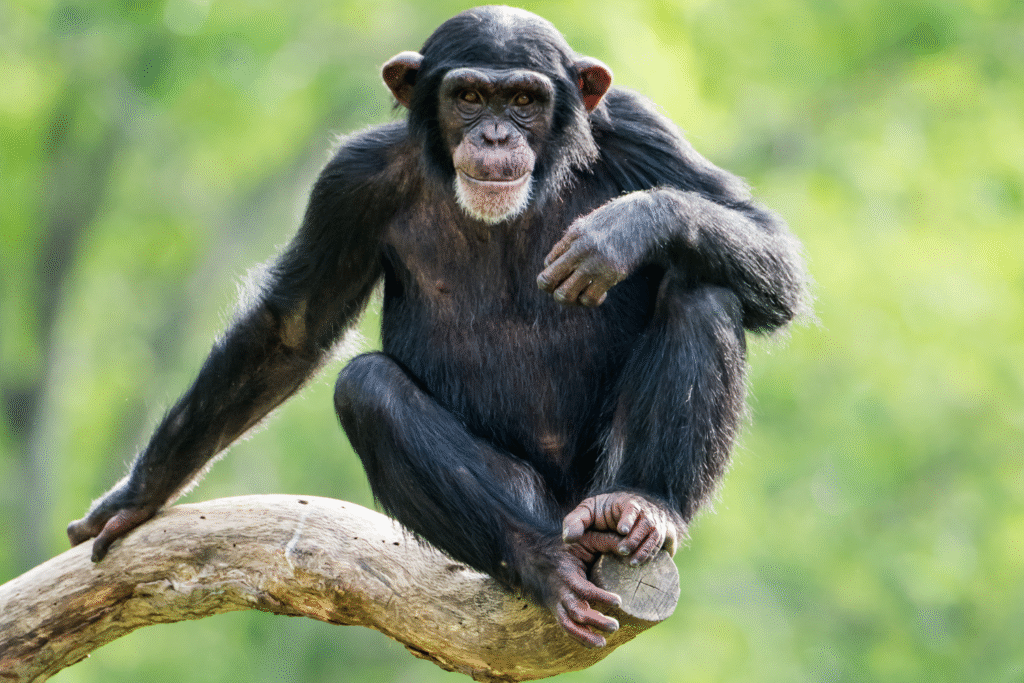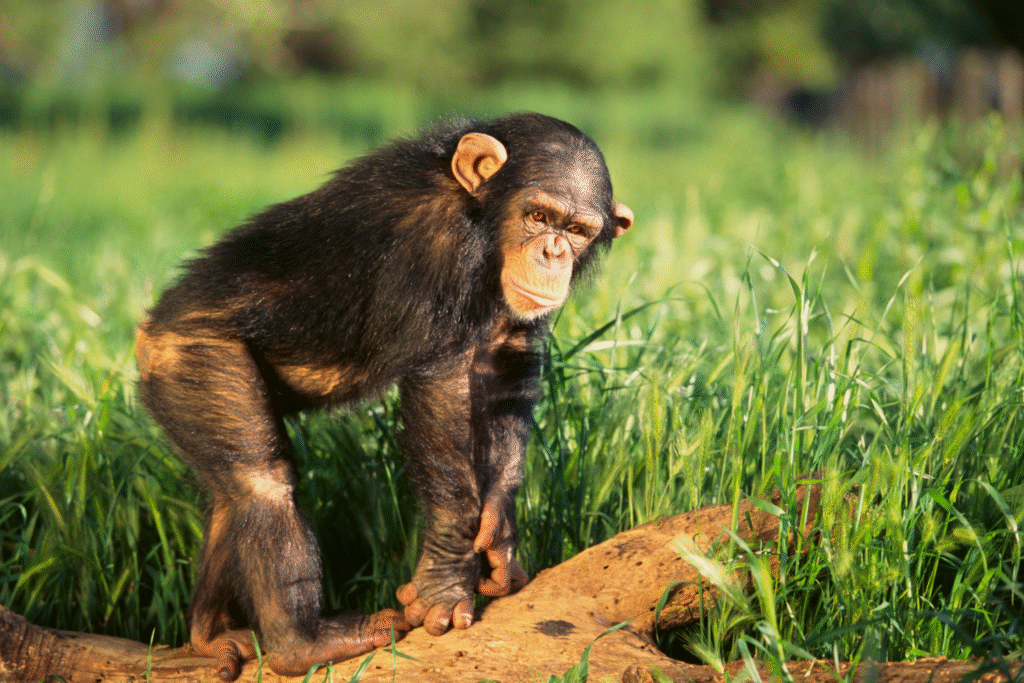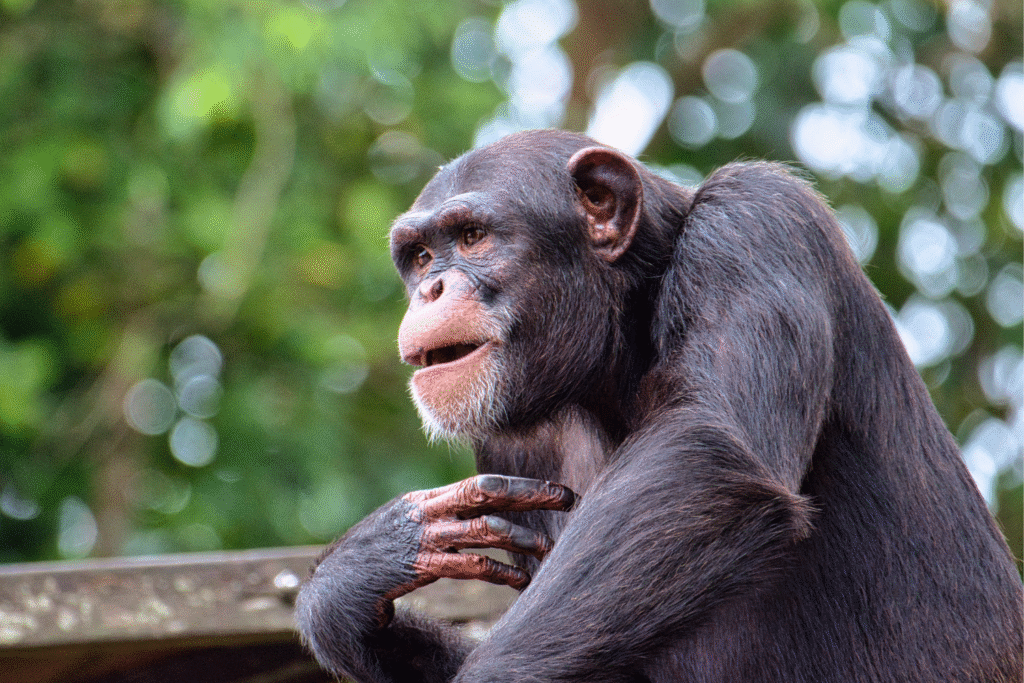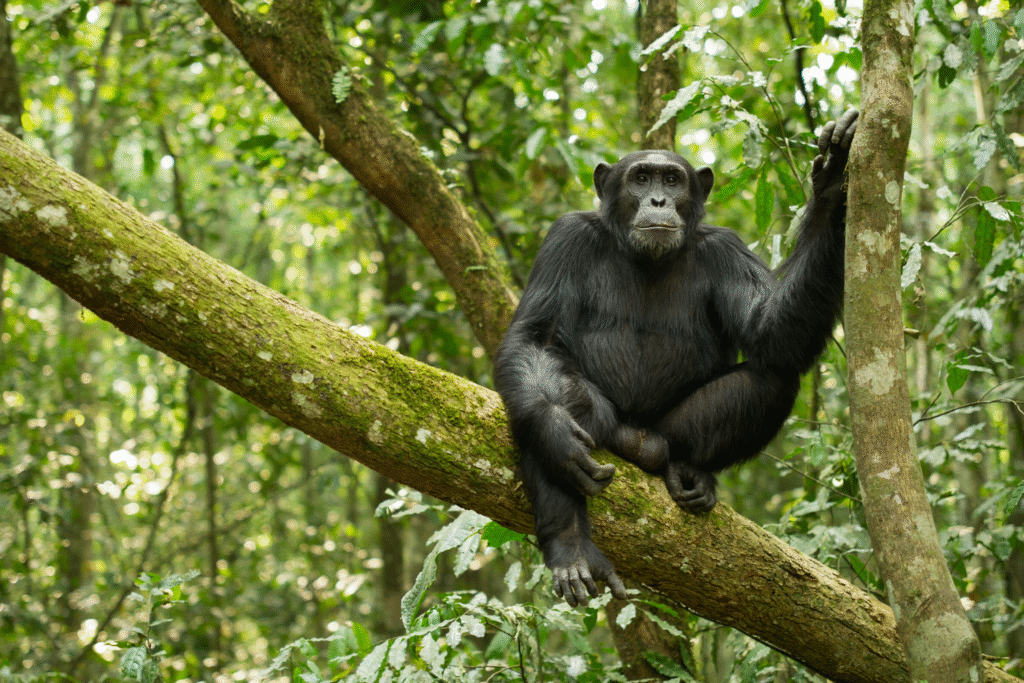Scientists discover rhythm and regional styles among apes.

Deep in the rainforests of Africa, chimpanzees have been creating something remarkable that scientists are only now beginning to understand. Recent groundbreaking research reveals that our closest living relatives don’t just bang randomly on tree roots—they drum with genuine rhythm, following patterns that share fundamental characteristics with human music. These discoveries suggest that the building blocks of musicality may stretch back millions of years to our common ancestor with chimpanzees, fundamentally changing how we think about the origins of one of humanity’s most cherished abilities.
1. Massive study reveals chimpanzees drum with genuine rhythm.

Scientists analyzed an unprecedented dataset spanning 24 years and 371 drumming episodes from 11 chimpanzee communities across Africa. Their research uncovered rhythmic patterns that mirror core elements of human music. The research team discovered that chimpanzees demonstrate non-random timing and isochrony, the musical term for evenly spaced beats that form the backbone of rhythm. According to researchers at the University of St. Andrews and University of Vienna, these findings represent the first convincing evidence that wild chimpanzees possess rhythmic abilities comparable to those found in human musical traditions. The scale of this study, covering populations from Senegal to Uganda, provides robust evidence that rhythmic drumming isn’t just an isolated behavior but a widespread chimpanzee cultural practice.
2. Different subspecies drum with distinct regional styles.

East and West African chimpanzees have evolved completely different drumming techniques, much like human musical traditions vary across cultures and regions. Western chimpanzees prefer isochronous drumming with evenly spaced hits that create a steady, clock-like rhythm, while eastern chimpanzees favor alternating patterns that switch between shorter and longer intervals, creating more complex syncopated rhythms reminiscent of jazz or world music, as reported by researchers from Current Biology. These regional differences persist across vastly different environments, from lush rainforests to dry savannas, suggesting that cultural transmission rather than environmental factors shapes drumming styles. The discovery that chimpanzee populations maintain distinct rhythmic traditions mirrors the way human musical cultures develop unique characteristics that persist across generations.
3. Tree buttresses serve as sophisticated musical instruments.

Chimpanzees demonstrate remarkable selectivity when choosing their drumming surfaces, consistently favoring hardwood trees with specific acoustic properties that maximize sound transmission across forest distances. These massive buttress roots function as natural amplifiers, allowing drumming sounds to travel over a kilometer through dense vegetation. As discovered by primatologists studying chimpanzee communication networks, the apes show clear preferences for trees that resonate well, suggesting they understand the acoustic principles that make certain surfaces superior instruments. The careful selection of drumming trees indicates that chimpanzees possess an aesthetic appreciation for sound quality, much like human musicians who choose instruments based on their tonal characteristics and resonance properties.
4. Isochrony emerges as the key musical building block.

The discovery of isochronous patterns in chimpanzee drumming represents perhaps the most significant finding, as this regular spacing of beats forms the fundamental basis for musical entrainment and synchronization. Just as Queen’s “We Will Rock You” uses three hits with two isochronous intervals that allow audiences to predict and participate in the rhythm, western chimpanzees create predictable beat patterns that other group members can anticipate. This temporal regularity enables the crucial musical phenomenon of entrainment, where individuals can synchronize their movements or vocalizations with an external rhythm. The presence of isochrony in chimpanzee drumming suggests that the cognitive mechanisms underlying musical rhythm existed in our common ancestor millions of years before humans developed complex musical traditions.
5. Individual drummers maintain unique personal signatures.

Each chimpanzee develops a distinctive drumming style that other group members can recognize from a distance, creating a forest-wide communication network based on rhythmic identity. These individual signatures encompass not just rhythm patterns but also tempo preferences, hit intensity, and integration timing with vocalizations, allowing listeners to identify specific drummers without visual contact. Research shows that chimpanzees can distinguish between different individuals based solely on their drumming characteristics, much like humans recognize musicians by their playing style. This personalized approach to rhythm production indicates sophisticated motor control and cognitive awareness of one’s own acoustic output compared to others in the community.
6. Drumming integrates seamlessly with vocal communication systems.

Rather than existing as isolated musical behavior, chimpanzee drumming functions as part of a complex multimodal communication system that combines rhythm with vocalizations like pant-hoots and other calls. Western chimpanzees typically integrate their drumming earlier in pant-hoot sequences, during the rhythmic build-up phase, while eastern chimpanzees show different temporal patterns of integration. This sophisticated coordination between percussion and vocalization parallels human musical traditions where rhythm sections support melodic elements, suggesting deep evolutionary connections between rhythmic and vocal communication systems. The seamless blending of drumming with other acoustic signals demonstrates that chimpanzees treat rhythm as an integral component of their social communication rather than a separate musical activity.
7. Stone throwing adds another percussion dimension.

Recent research has uncovered a second form of chimpanzee percussion involving stones thrown against tree trunks, expanding our understanding of rhythmic communication beyond traditional buttress drumming. Western chimpanzees in Guinea-Bissau maintain stone caches near specific trees and use these rocks to create additional percussive sounds as part of their communication repertoire. This stone-assisted drumming appears to serve distinct signaling functions compared to hand and foot drumming, suggesting that chimpanzees have developed multiple percussion techniques for different communicative purposes. The deliberate hoarding and reuse of stones for percussion indicates forward planning and tool use specifically for sound production rather than food procurement.
8. Tempo differences reveal cultural learning mechanisms.

The discovery that western chimpanzees drum at significantly faster tempos than their eastern counterparts provides compelling evidence for cultural transmission of rhythmic traditions rather than genetic programming. These tempo variations remain stable within populations across different ecological conditions, indicating that young chimpanzees learn drumming styles from their community members rather than developing them independently. The persistence of regional tempo preferences mirrors how human musical cultures maintain characteristic rhythmic feels—from the laid-back grooves of reggae to the rapid-fire patterns of death metal. This cultural component of rhythm production suggests that musical traditions can be passed down through social learning in our closest relatives.
9. Evolutionary timeline pushes musical origins back millions.

The presence of rhythmic drumming in both humans and chimpanzees strongly suggests that these musical abilities existed in our last common ancestor approximately 7 to 9 million years ago. This discovery dramatically extends the evolutionary timeline for musical behavior, indicating that percussion-based communication systems are far more ancient than previously imagined. The shared capacity for rhythm production between humans and chimpanzees points to deep evolutionary conservation of the neural mechanisms underlying musical timing and motor coordination. These findings challenge theories that music emerged only recently in human evolution, instead suggesting that rhythmic communication represents an ancient mammalian trait that humans later elaborated into complex musical systems.
10. Conservation implications highlight cultural diversity loss.

The recognition that different chimpanzee populations maintain unique rhythmic traditions adds urgency to conservation efforts, as each lost community represents the disappearance of irreplaceable cultural knowledge. Just as human musical traditions carry centuries of cultural information, chimpanzee drumming styles embody population-specific behavioral innovations that took generations to develop and refine. The destruction of chimpanzee habitats doesn’t just threaten individual animals but erases entire cultural traditions that could provide crucial insights into the evolutionary origins of human musicality. These discoveries emphasize that protecting chimpanzee populations means preserving not just genetic diversity but also the rich cultural heritage embedded in their rhythmic communication systems, offering a powerful new argument for comprehensive great ape conservation strategies.
